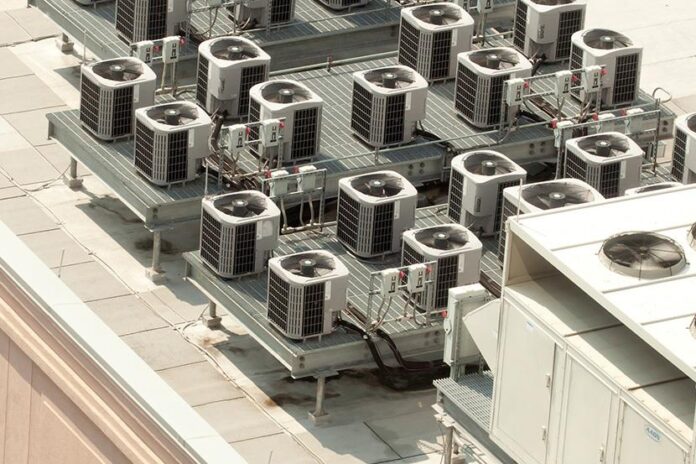
Welcome to this comprehensive manual on cooling systems. This manual attempts to familiarize you with the core ideas of cooling systems. You will develop a grasp of the various kinds of refrigeration systems, their uses, and the guiding concepts behind how they work.
By the end of this article, you’ll have a strong knowledge of refrigeration and be equipped to delve deeper into this fascinating subject.
Importance Of Refrigeration In Daily Life
Refrigeration is essential for everything from keeping food and medicines fresh to giving comfort through air conditioning. The demand for refrigeration courses to teach experts in maintaining and constructing effective cooling systems has increased. As a result, offering opportunities for businesses and industries.
The Basics Of Cooling

Cooling eliminates heat from an area or object, which causes the temperature to drop. Transferring heat energy from a higher-temperature item to a lower-temperature object is essential to the science of cooling. Radiation, conduction, and convection all naturally take place in this process.
The Science Behind Cooling
Heat is taken from the area being cooled and released into the surroundings in refrigeration. Refrigerant, a chemical that can quickly transform from a liquid to a gas and back again, is used to do this. The refrigerant absorbs heat as it turns into a gas and releases it as it returns to a liquid state.
Understanding Temperature And Pressure
Pressure and temperature are crucial factors in the cooling process. The “pressure-temperature curve” of the refrigerant describes the relationship between temperature and pressure. This graph depicts the refrigerant’s behavior under various pressure and temperature circumstances. It is possible to alter the refrigerant’s temperature and convert it from a liquid to a gas or vice versa by adjusting the refrigerant’s pressure.
Types Of Cooling Systems

There are four main types of cooling systems:
- Vapor compression refrigeration: Vapor compression refrigerator is a widely used technology for cooling and refrigeration purposes. It is the most common method found in refrigerators, air conditioners, and heat pumps.
- Absorption refrigeration: This type of refrigerator system combines a refrigerant with an absorbent substance to remove heat. It is frequently employed in industrial or large-scale applications, such as food processing or cooling enormous structures.
- Thermoelectric refrigeration: This kind of cooling system circulates an electric current through a substance to employ the Peltier effect to cool it. Small refrigeration applications, like cooling electronic parts or medical gear, frequently use it.
- Cryogenic refrigeration: This system uses shallow temperatures to cool items. It is frequently employed in scientific and commercial applications, such as liquefying gasses or cooling superconducting materials.
Components Of A Refrigeration System

A cooling system typically consists of four main components:
- Compressor: This component is responsible for compressing the refrigerant gas and raising its temperature and pressure, which allows it to release heat to the surrounding environment.
- Condenser: . The condenser converts compressed refrigerant gas into a high-pressure liquid by removing heat.
- Expansion valve: The expansion valve reduces the pressure of the liquid refrigerant, allowing it to expand and cool.
- Evaporator: The evaporator changes the low-pressure liquid refrigerant into a low-pressure gas. The cycle is started over by drawing this gas back into the compressor. During this process, heat from the surroundings is absorbed.
Career Opportunities
Modern civilization can only function with refrigerator technology, which presents many professional prospects. Some of the jobs in refrigeration are:
- Refrigeration Technician: A refrigeration technician is in charge of installing, maintaining, and fixing refrigerator equipment, including air conditioners, refrigerators, and freezers.
- HVAC Engineers: These professionals create and execute cooling-based heating, ventilation, and air conditioning (HVAC) systems.
- Refrigeration Engineer: Refrigeration engineers create, test, and create refrigeration apparatus.
- Refrigeration Mechanic: A refrigerator mechanic fixes and maintains cooling systems in commercial and industrial environments.
- Sales Engineer: Sales engineers are in charge of promoting cooling products to customers.
The job position, geographic region, and amount of experience all affect the typical wage in the refrigeration industry. According to the U.S. Bureau of Labour Statistics, the median annual salary for heating, air conditioning, and refrigerator mechanics and installers was $51,420 as of May 2020. The top 10% of earners made more than $77,920, while the bottom 10% made less than $31,910.
In the upcoming years, there should be plenty of work opportunities for those pursuing professions in refrigeration. The need for refrigerator technology will expand as the world’s population rises, especially in emerging nations where infrastructure is still being built. Particularly in sectors like food manufacturing, medicines, and cold storage, there will continue to be considerable demand for refrigerator technicians, engineers, and mechanics.
Refrigeration Uses In Different Industries

Refrigeration is vital in various industries, including food, medicine, and HVAC. Let’s take a closer look at how each of these industries utilizes cooling system.
Food industry:
cooling is utilized in the food industry to preserve and prolong the expiration of perishable foods such as poultry, dairy products, and fruits and vegetables. This prevents decomposition and preserves freshness. In food processing, cooling is utilized to produce frozen delicacies, ice cream, and baked products, among other things.
Medical industry:
cooling stores and conveys temperature-sensitive medical supplies, vaccines, and medications in the medical industry. This is especially essential for vaccines, which can lose efficacy if not stored at the appropriate temperature. Preserving human tissues and organs for transplant also relies heavily on medical refrigeration.
HVAC industry:
Refrigeration is utilized in air conditioning systems to chill and dehumidify interior areas in the HVAC sector. Refrigeration is also utilized in commercial cooling systems, such as those found in grocery stores and restaurants, to maintain the proper temperature of food and drinks.
The proper operation of cooling systems is critical in all three industries to preserve product quality, safety, and efficiency.
Conclusion

Refrigeration plays a vital role in several sectors, including the food, healthcare, and HVAC (Heating, Ventilation, and Air Conditioning) industries. The storage of temperature-sensitive medical supplies, preservation of perishable foods, and cooling of interior areas are all made possible by refrigeration. In many businesses, preserving product quality, safety, and efficiency depends on cooling systems operating correctly.








